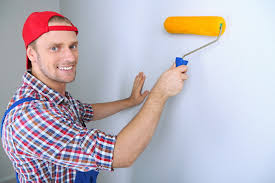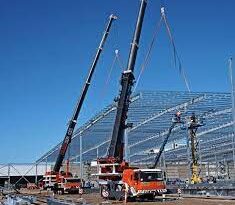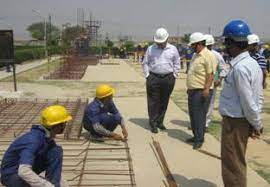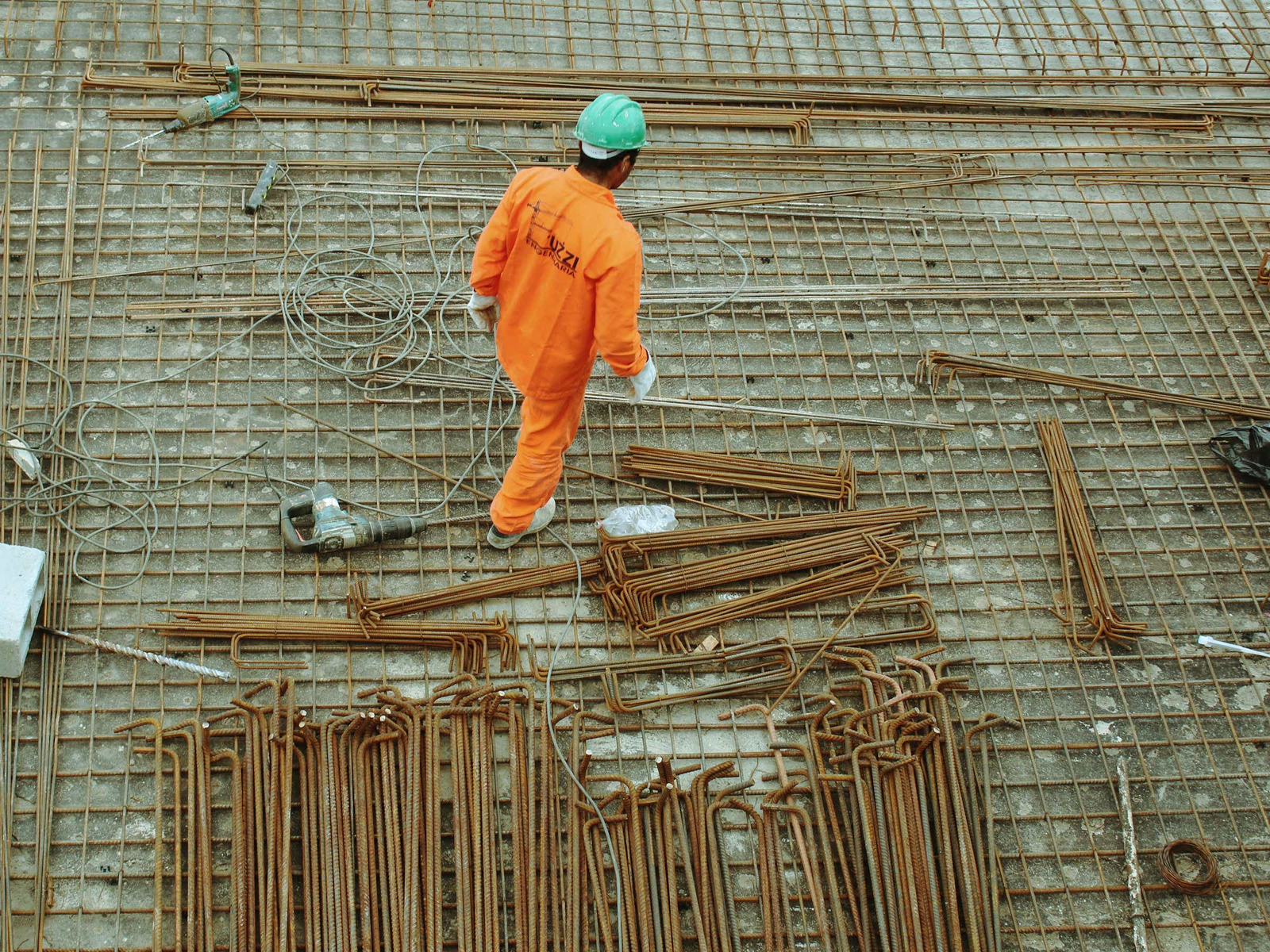Assistant Construction Painter & Decorator ( 6 month course)
Assistant Construction Painter & Decorator click here
Brief Job Description
This job role is responsible for identification and preparation of paints and all types of basic surfaces,
mixing of colors & paints and their application for obtaining plain finish, erection & dismantling of
temporary scaffolding and varnishing and polishing of doors and windows.

Personal Attributes
The individual is expected to be physically fit and should be able to work across various locations in
extreme weather/site conditions. The person should be able to perform efficiently within a team, handle
the various painting tools and materials and work responsibly.
Carry out preparation of all type of basic surfaces for painting works
Description
This unit describes the skills and knowledge required to carry out preparation of all type of basic surfaces
for painting works
Scope
The scope covers the following :
Carry out preparation of all type of basic surfaces for painting works
Elements and Performance Criteria
Carry out preparation of all type of basic surfaces for painting works
To be competent, the user/individual on the job must be able to:
PC1. visually assess the surface for the type of preparation method required
PC2. select and use appropriate materials, tools and equipment for preparing basic surfaces by
removing rust, grease, dirt, concrete, and old paint prior to paint application
PC3. protect the work and its surrounding area from damage in accordance with organizational
procedures/instruction
PC4. select appropriate preparation process as per the type of surface such as plastered masonry
and RCC surface, metal surface and wood surface
PC5. carry out surface preparation methods such as washing, stripping/ scarping, abrading &
keying, and brushing for various surfaces
PC6. prepare metal surface by degreasing, solvent wiping and abrading using appropriate tools
PC7. prepare wood surface by scraping, solvent wiping and abrading using appropriate tools
PC8. remove existing coating as per requirement/instruction using appropriate methods
PC9. level and fill all voids and undulations on the surface using appropriate filler for obtaining a
flushed finished surface
Knowledge and Understanding (KU)
The individual on the job needs to know and understand:
KU1. standard practices of painting works
KU2. safety rules and regulation for handling and storing required painting tools, equipment and
materials
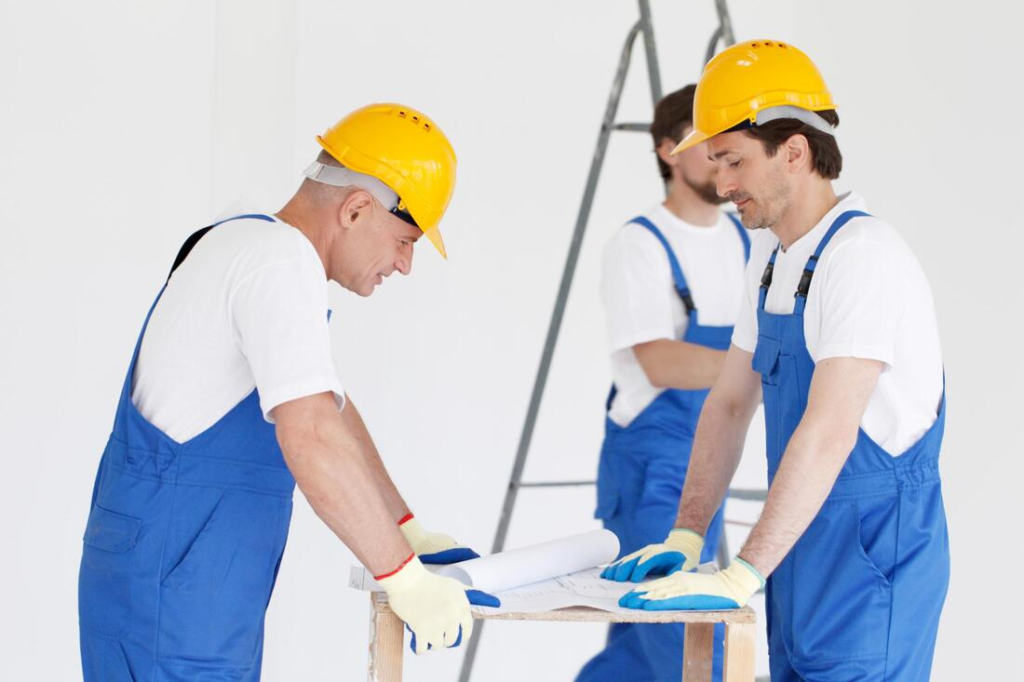
KU3. personal protection including the use of related safety gears & equipment
KU4. how to request tools and materials as per set procedures
KU5. maintenance of tools and equipment
KU6. types of materials required for surface preparation such as putties, stoppers, solvents, filler,
mordant solutions & stabilizing solutions
KU7. types of tools required for surface preparation such as scraper, putty knife,chisel knife,
knotting brush, nail punch, hammer, dusting brush, dust masks, wire brushes, goggles, filling
knife, filling board, gloves & buckets
KU8. how to select and use tools and equipment for surface preparation
KU9. methodology for preparation of different surfaces like masonry, RCC ,wood and metal by wet
and dry abrading, degreasing, knotting, priming, , filling,rust removal, raking out, removal of
paint systems & removal of wallcoverings
KU10. different type of abrasives such as glass, sand paper, sanders and their uses
KU11. different types of cleaning agents used for surface preparation
KU12. different type of fillers and their uses
Generic Skills (GS)
User/individual on the job needs to know how to:
GS1. write in one or more language, preferably in the local language of the site
GS2. read one or more language, preferably the local language of the site
GS3. read instructions, guidelines, sign boards, safety rules & safety tags
GS4. read instructions and exit routes during emergency
GS5. speak in one or more language, preferably in one of the local language of the site
GS6. listen and follow instructions communicated by supervisors
GS7. orally and effectively communicate with team member
GS8. plan self-work as per the direction under close supervision of a superior
GS9. ensure that all work is done as per instructions provided by superiors
GS10. identify location at which violation of any safety norms may lead to accidents
Erect and dismantle temporary scaffold up to 3.6 meter height
Description
This unit describes the skills and knowledge required to erect and dismantle 3.6 meter temporary scaffold
Scope
The scope covers the following :
Erect and dismantle temporary scaffold up to 3.6 meter height
Elements and Performance Criteria
• Erect and dismantle temporary scaffold up to 3.6 meter height
To be competent, the user/individual on the job must be able to:
PC1. level area where scaffold need to be erected and check for ground compactness if required
PC2. shift and stack required materials, components, tools and tackles at the instructed location
PC3. wear and use required safety gadgets and follow trade safety
PC4. place base plates and sole boards on the ground as per markings and instructions
PC5. use proper components and follow standard procedure for erecting temporary scaffold up to
3.6 m
PC6. check verticality of scaffold at first level of erection and correct (if required) before moving to
the next level
PC7. check for rigidity, stability and support of erected scaffold
PC8. fix walk-boards, guard rails, toe-boards and other components on working platform
PC9. follow standard procedure for dismantling of 3.6 m temporary scaffold
PC10. remove guard rails, toe boards, walk boards and other components sequentially
PC11. clean and stack all components properly after dismantling
PC12. maintain tidiness at work location
Knowledge and Understanding (KU)
The individual on the job needs to know and understand:
KU1. standard procedure for scaffolding works
KU2. safety rules and regulations for handling and storing scaffolding tools, materials and
components

KU3. personal protection including use of safety gears and equipment
KU4. safe working methods and movements while performing relevant tasks
KU5. request procedure for tools & materials
KU6. housekeeping & other administrative rules
KU7. use of different types of scaffolds (cup-lock , frame scaffold)
KU8. use of tools and tackles in scaffolding works
KU9. identification and use of different components
KU10. use of tools for measurements and marking
KU11. basic arithmetic calculation
KU12. units of measurements
KU13. standard size of scaffolding components
KU14. personal protective equipment for safety
KU15. importance of housekeeping
KU16. standard procedure for erection and dismantling of 3.6 m temporary scaffold
KU17. tools and equipment used for erecting and dismantling 3.6 meter temporary scaffoild
Generic Skills (GS)
User/individual on the job needs to know how to:
GS1. write in one or more language, preferably in the local language of the site
GS2. read one or more language, preferably the local language of the site
GS3. read instructions, guidelines, sign boards, safety rules & safety tags instruction related to
exit routes during emergency at the workplace

GS4. speak in one or more language, preferably in one of the local languages of site
GS5. listen and follow instructions / communication shared by superiors/ co- workers regarding
team requirements or interfaces during work processes
GS6. orally communicate with co-workers regarding support required to complete the respective
work
GS7. decide whether the workplace is safe for working and also whether the relevant work is not
creating hazardous conditions for others
GS8. identify and organize right scaffolding materials
GS9. identify and use relevant tools effectively
GS10. complete work as per agreed time and quality
GS11. minimize wastages
GS12. revert to superior for selection/sorting of materials
GS13. identify location at which violation of any safety norms may lead to accidents
Apply paints to masonry, metal and wood surfaces for
obtaining plain finishes
Description
This unit describes the skills and knowledge required to apply paints to masonry, metal and wood surfaces or obtaining plain finish
Scope
The scope covers the following :
Carry out preparation of base surfaces prior to painting on masonry, wood and metal surfaces
Carry out preparation of paint mix using various constituents as per instructions
Apply paint to produce a paint film of uniform thickness as per instructions under close supervision
Elements and Performance Criteria
Carry out preparation of base surfaces prior to painting on masonry, wood and metal surfaces
To be competent, the user/individual on the job must be able to:
PC1. carry out surface measurements and roughly estimate the quantity of required materials
under supervision

PC2. ensure surface is free from dust, dirt and grease and is prepared appropriately prior to
application of paints
PC3. apply putty to fill gaps and depressions on the surface for preparation of a leveled surface
PC4. cover the adjacent surfaces with drop cloths/ masking tape/paper and remove all removable
items prior to painting
Carry out preparation of paint mix using various constituents as per instructions
To be competent, the user/individual on the job must be able to:
PC5. select appropriate painting material ,tools and mixing ingredients as per requirement
/specified finish under supervision
PC6. carry put proper cleaning ,maintenance and upkeep of painting tools and equipment before
and after use
PC7. mix the correct amount of paint material with additives as per specified ratio
PC8. follow standard procedure/ specification for effective mixing and dilution of paints under
supervision
PC9. add reducer/thinner/ water to adjust viscosity of paint mix as per requirement/instructions
Apply paint to produce a paint film of uniform thickness as per instructions under close supervision
To be competent, the user/individual on the job must be able to:
PC10. apply primer coats to the finished/leveled surfaces as per instructions
PC11. apply main coat of paint over primer within specified time limits under supervision
PC12. apply final coat as per required tint under supervision
PC13. clean the surface of each dried coat appropriately as per instructions before application of
the next coat
PC14. assist in applying the final tinted coat under supervision
Knowledge and Understanding (KU)
The individual on the job needs to know and understand:
KU1. standard practices of painting works
KU2. safety rules and regulation for handling and storing required painting tools, equipment and
materials
KU3. personal protection including the use of related safety gears & equipment
KU4. how to request tools and materials as per set procedures
KU5. maintenance of tools and equipment
KU6. standard practices for painting process
KU7. basic measurements
KU8. basic sketches /specifications related to painting works
KU9. how to select and use appropriate tools and equipment
KU10. various tools and equipment used in painting such as brushes, rollers ,painting bucket,
stirrers, scrapers ,sand papers, putty blades etc.
KU11. various painting and finishing material and mixing ingredients such as scrape, primer, base
color, tint base, colorants, varnishes, enamel, etc.

KU12. methods of protecting adjacent surfaces prior to painting
KU13. how to mix the correct amount of paint material as per specified ratio
KU14. how to adjust viscosity of paint mix as per requirement
KU15. different reducers/thinners used for adjusting viscosity
KU16. application of primer as per requirement
KU17. adhesives used for binding coats of paint such as oil, turpentine, mildew remover, or other
preparations, and sand rough spots
KU18. surface preparation methods
KU19. putty and its use in surface preparation
Generic Skills (GS)
User/individual on the job needs to know how to:
GS1. write in one or more language, preferably in the local language of the site
GS2. read one or more language, preferably the local language of the site
GS3. read instructions, guidelines, sign boards, safety rules & safety tags
GS4. read instructions and exit routes during emergency
GS5. speak in one or more language, preferably in one of the local language of the site
GS6. listen and follow instructions communicated by supervisors
GS7. orally and effectively communicate with team member
GS8. plan self-work as per the direction under close supervision of a superior
GS9. ensure that all work is done as per instructions provided by superiors
GS10. identify location at which violation of any safety norms may lead to accidents
Work effectively in a team to deliver desired results at the workplace
Description
This unit describes the skills and knowledge required to work effectively within a team to achieve the
desired results
Scope
The scope covers the following :
Interact and communicate effectively with co-workers, superiors and sub-ordinates across different
teams
Support co-workers, superiors and sub-ordinates within the team and across interfacing teams to
ensure effective execution of assigned task
Elements and Performance Criteria
Interact and communicate in effective and conclusive manner
To be competent, the user/individual on the job must be able to:
PC1. pass on work related information/ requirement clearly to the team members
PC2. inform co-workers and superiors about any kind of deviations from work
PC3. address the problems effectively and report if required to immediate supervisor appropriately
PC4. receive instructions clearly from superiors and respond effectively on the same
PC5. communicate to team members/subordinates for appropriate work technique and method
PC6. seek clarification and advice as per the requirement and applicability
Support co-workers to execute project requirements
To be competent, the user/individual on the job must be able to:
PC7. hand over the required material, tools tackles, equipment and work fronts timely to interfacing
teams
PC8. work together with co-workers in a synchronized manner
Knowledge and Understanding (KU)
The individual on the job needs to know and understand:
KU1. own roles and responsibilities
KU2. importance of effective communication and establishing strong working
KU3. risks of a failure in teamwork in terms of effects on project outcomes, timelines, safety at the
construction site, etc.
KU4. different modes of communication, and its appropriate usage
KU5. importance of creating healthy and cooperative work environment among the gangs of
workers
KU6. different activities within his work area where an interaction with other workers is required
KU7. applicable techniques of work, properties of materials used, tools and tackles used, safety
standards that co- workers might need as per the requirement
KU8. importance of proper and effective communication and the expected adverse
KU9. importance and need of supporting co-workers facing problems for smooth
Generic Skills (GS)
User/individual on the job needs to know how to:
GS1. write in at least one language, preferably in the local language of the site
GS2. read in one or more languages, preferably the local language of the site
GS3. read communication from team members regarding work completed, materials used, tools
and tackles used, support required

GS4. speak in one or more languages, preferably in one of the local language of the site
GS5. listen and follow instructions / communication shared by superiors/ co-workers regarding
team requirements or interfaces during work processes
GS6. orally communicate with co-workers regarding support required to complete the respective
work
GS7. decide on what information is to be shared with co-workers within the team or from
interfacing gang of workers
GS8. plan work and organize required resources in coordination with team members
GS9. complete all assigned task in coordination with team members
GS10. take initiative in resolving issues among co-workers or report the same to superiors
GS11. ensure best ways of coordination among team members
GS12. communicate with co-workers considering their educational / social background
GS13. evaluate the complexity of task and determine if any guidance is required from superiors
Work according to personal health, safety and environment protocol at construction site
Description
This NOS covers the skill and knowledge required for an individual to work according to personal health,
safety and environmental protocol at construction site
Scope
The scope covers the following :
Follow safety norms as defined by organization
Adopt healthy & safe work practices
Implement good housekeeping and environment protection process and activities
Elements and Performance Criteria
Follow safety norms as defined by organization
To be competent, the user/individual on the job must be able to:
PC1. identify and report any hazards, risks or breaches in site safety to the appropriate authority
PC2. follow emergency and evacuation procedures in case of accidents, fires, natural calamities
PC3. follow recommended safe practices in handling construction materials, including chemical
and hazardous material whenever applicable
PC4. participate in safety awareness programs like Tool Box Talks, safety demonstrations, mock
drills, conducted at site
PC5. select and operate different types of fire extinguishers corresponding to types of fires as per
EHS guideline
PC6. identify near miss , unsafe condition and unsafe act
Adopt healthy & safe work practices
To be competent, the user/individual on the job must be able to:
PC7. use appropriate Personal Protective Equipment (PPE) as per work requirements including:
Head Protection (Helmets), Ear protection Fall Protection, Foot Protection, Face and Eye
Protection, Hand and Body Protection, Respiratory Protection (if required)
PC8. handle all required tools, tackles , materials & equipment safely
PC9. follow safe disposal of waste, harmful and hazardous materials as per EHS guidelines
PC10. install and apply properly all safety equipment as instructed
PC11. follow safety protocol and practices as laid down by site EHS department
PC12. undertake and pass height pass test as per EHS guideline
Implement good housekeeping practices
To be competent, the user/individual on the job must be able to:
PC13. collect and deposit construction waste into identified containers before disposal, separate
containers that may be needed for disposal of toxic or hazardous wastes
PC14. apply ergonomic principles wherever required
Knowledge and Understanding (KU)
The individual on the job needs to know and understand:
KU1. reporting procedures in cases of breaches or hazards for site safety, accidents, and
emergency situations as per guidelines
KU2. types of safety hazards at construction sites
KU3. basic ergonomic principles as per applicability
KU4. the procedure for responding to accidents and other emergencies at site
KU5. use of appropriate personal protective equipment to be used based on various working
conditions
KU6. importance of handling tools, equipment and materials as per applicable
KU7. health and environments effect of construction materials as per applicability
KU8. various environmental protection methods as per applicability
KU9. storage of waste including the following at appropriate location: non-combustible scrap
material and debris, combustible scrap material and debris, general construction waste and
trash (non-toxic, non-hazardous), any other hazardous wastes and any other flammable
wastes
KU10. how to use hazardous material, in a safe and appropriate manner as per applicability
KU11. types of fire
KU12. procedure of operating different types of fire extinguishers
KU13. safety relevant to tools, tackles, & requirement as per applicability
KU14. housekeeping activities relevant to task
Generic Skills (GS)
User/individual on the job needs to know how to:
GS1. write in at least one language, preferably in the local language of the site
GS2. fill safety formats for near miss, unsafe conditions and safety suggestions
GS3. read in one or more language, preferably in the local language of the site
GS4. read sign boards, notice boards relevant to safety
GS5. speak in one or more language, preferably in one of the local language of the site
GS6. listen instructions / communication shared by site EHS and superiors regarding site safety,
and conducting tool box talk
GS7. communicate reporting of site conditions, hazards, accidents, etc.
GS8. not create unsafe conditions for others
GS9. keep the workplace clean and tidy
GS10. identify safety risks that affect the health, safety and environment for self and others
working in the vicinity, tackle it if within limit or report to appropriate authority
GS11. assess and analyze areas which may affect health, safety and environment protocol on the site
GS12. ensure personal safety behavior GS13. respond to emergency
Carry out varnishing and polishing of doors, windows partitions and other wooden surfaces under supervision
Description
This unit describes the skills and knowledge required to carry out varnishing and polishing of doors,
windows partitions and other wooden surfaces under supervision
Scope
The scope covers the following :
Carry out preparation of base surfaces prior to varnishing and polishing
Carry out preparation of paint mix using various constituents as per instructions
Apply varnish and polish on various wooden surfaces
Elements and Performance Criteria
Carry out preparation of base surfaces prior to varnishing and polishing
To be competent, the user/individual on the job must be able to:
PC1. remove all loose & detrimental foreign matter by using appropriate tools
PC2. brush bleaching agents on wood surface to restore natural color as per instruction
PC3. fill gaps/depressions with appropriate wood filler
PC4. smooth, shape, and touch-up surface using sandpaper, pumice stones, steel wool, chisels,
sanders, or grinders
PC5. cover all adjacent surfaces with drop cloths/ masking tape/paper and remove all removable
items/accessories prior to varnishing and polishing
Carry out preparation of paint mix using various constituents as per instructions
To be competent, the user/individual on the job must be able to:
PC6. select appropriate finishing ingredients such as paint, stain, lacquer, shellac, or varnish as
per specification/instructions
PC7. mix the correct amount of paint material with additives as per specified ratio under
supervision
PC8. follow standard procedure for effective mixing and dilution of paints
PC9. add reducer/thinner/ water to adjust viscosity of paint mix as per requirement/instruction
Apply varnish and polish on various wooden surfaces
To be competent, the user/individual on the job must be able to:
PC10. apply a primer coat to the wood surface as per instruction
PC11. apply paint /varnish coat of specified thickness after the primer has dried for specified time
under close supervision
PC12. carry out sanding of the surface using appropriate tools as per instructions under supervision
apply coat of putty/wood filler wood and sand the applied coat as per instructions
PC13. apply finished coats to produce smooth surfaces of uniform thickness as per instructions
under supervision
PC14. apply toners, highlights, glazes or shades ,lacquers and sealers as per instructions under
supervision
Knowledge and Understanding (KU)
The individual on the job needs to know and understand:
KU1. standard practices of painting works
KU2. safety rules and regulation for handling and storing required painting tools, equipment and
materials
KU3. personal protection including the use of related safety gears & equipment
KU4. how to request tools and materials as per set procedures
KU5. maintenance of tools and equipment
KU6. standard practices for painting process
KU7. basic measurements
KU8. basic sketches /specifications related to painting works
KU9. how to select and use appropriate tools and equipment
KU10. various tools and equipment used in painting such as brushes, rollers ,painting bucket,
stirrers, scrapers ,sand papers, putty blades etc.
KU11. various painting and finishing material and mixing ingredients such as scrape, primer, base
color, tint base, colorants, varnishes, enamel, etc.
KU12. methods of protecting adjacent surfaces prior to painting
KU13. how to mix the correct amount of paint material as per specified ratio
KU14. how to adjust viscosity of paint mix as per requirement
KU15. different reducers/thinners used for adjusting viscosity
KU16. application of primer as per requirement
KU17. adhesives used for binding coats of paint such as oil, turpentine, mildew remover, or other
preparations, and sand rough spots
KU18. surface preparation methods
KU19. putty and its use in surface preparation
KU20. importance of applying bleaching agents on wood surface
KU21. application of finishes, varnishes, putty, primer, sealants, toners, etc.
Generic Skills (GS)
User/individual on the job needs to know how to:
GS1. write in one or more language, preferably in the local language of the site
GS2. read one or more language, preferably the local language of the site
GS3. read instructions, guidelines, sign boards, safety rules & safety tags
GS4. read instructions and exit routes during emergency
GS5. speak in one or more language, preferably in one of the local language of the site
GS6. listen and follow instructions communicated by supervisors
GS7. orally and effectively communicate with team member
GS8. plan self-work as per the direction under close supervision of a superior
GS9. ensure that all work is done as per instructions provided by superiors
GS10. identify location at which violation of any safety norms may lead to accidents

